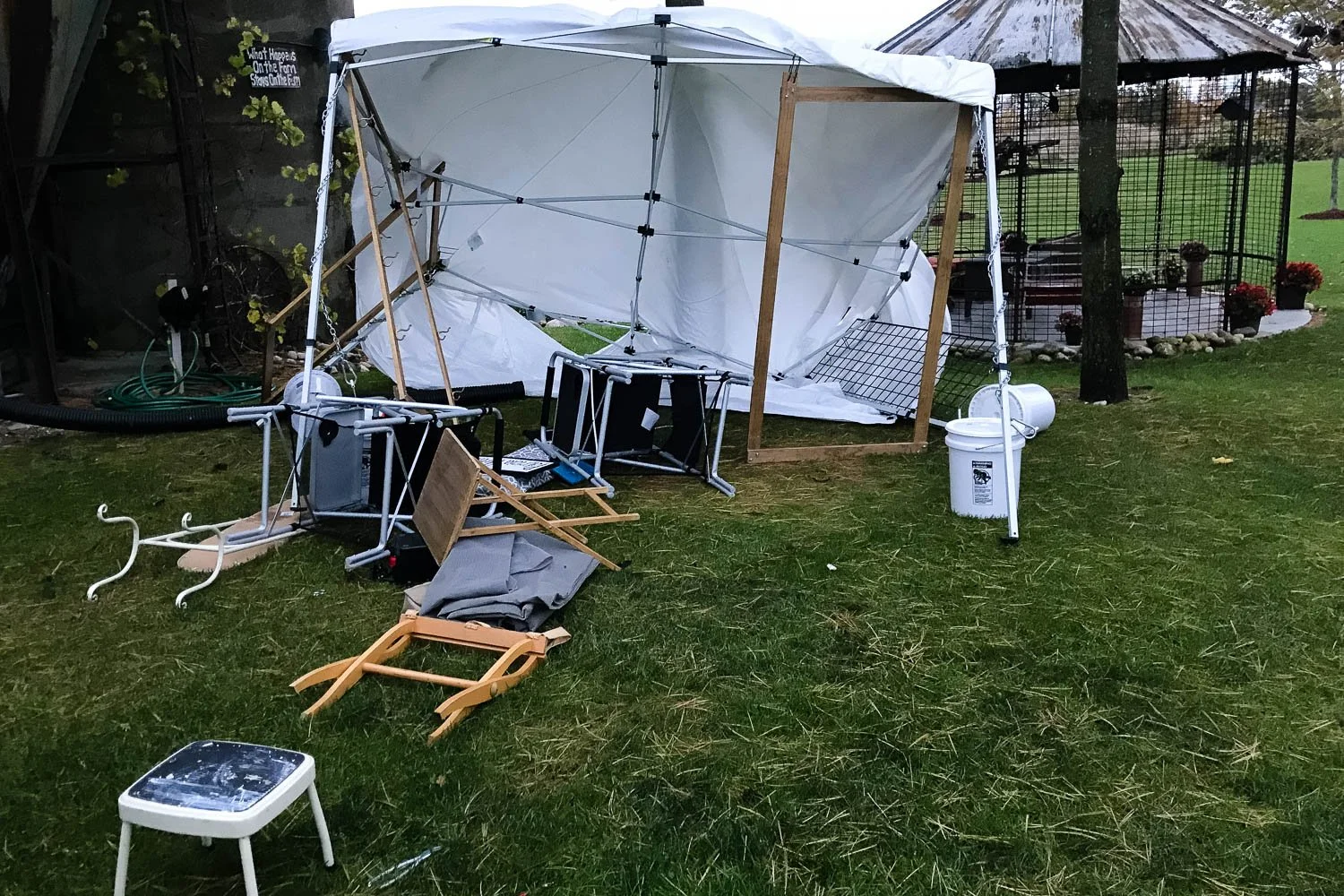Art Fair & Photography Insurance
Are You Adequately Insured, or even Covered?
Is your photography equipment covered for theft?
Is your art fair inventory, and/or your neighbor’s booth covered in the event your art show canopy collapses in the wind, damaging the adjacent booth?
What happens if a visitor is injured, tripping over your photography flip bin display?
Are you insured?
Is your insurance adequate?
As a small business, especially starting out, it is easy to want to skip the need for insurance. Insurance is expensive. The loss of equipment, damage at an art fair, or someone getting injured, can be far more so.
Don’t Assume
Here is where a meeting with your insurance agent can be of great value.
From what I’ve learned with my own agent discussions, generally speaking, the short answer to “Do I need business insurance?” comes down to “Are you in business?”
If you are taking in money for what you do (ex. sell prints at art fairs or on-line, license images on stock photography, shoot weddings), then the answer seems pretty clear.
Homeowners policy will not cover business pursuits (at least mine doesn’t).
Not All Insurance is The Same
With my own experience, I’ve also learned that each company’s business insurance may not be equal with another, and thus just comparing pricing doesn’t work.
As an example, a number of years ago I switched companies because one local representative offered a “photographers’ insurance” package.
Previously, I had great insurance via an internet agent.
After discussing what I needed and what I did (ie. landscape photography, no weddings, sold prints at art shows, etc.) we filled out the application and I was covered. It also was about 10% less expensive, though of most interest to me was the local representation.
Read the Policy Carefully
A short time later, I received the thick book with the policy and exceptions. Just before filing it away, I skimmed it quickly. One page particularly caught my attention.
Under “exception to coverage” section – my photography equipment was covered from theft from a vehicle only if the vehicle was equipped with an alarm, the alarm was activated, and the doors locked!
The insurance agent knew our cars didn’t have alarms. That meant my equipment in my locked vehicle wasn’t covered. If the equipment was laying outside my vehicle, it was!
The insurance agent thought I was reading this incorrectly. His quick call to the underwriter and confirmed my worst fear.
I immediately cancelled the policy, found an agent 30 miles away offering the insurance I previously had via the internet, and by the end of a few hours, was back with the very good policy. Lesson learned.
Multiple Policies vs. Singular
Early on I had insurance with a company that didn’t have a package, but rather different policies.
I have also had a singular policy from a company that covered quite well. Either one works, just make sure to have the coverage you need.
State Farm Insurance
For me, I have been very happy with the business insurance coverage from State Farm.
From an insurance perspective, I understand this is two policies wrapped into one. The Business Insurance and the Inland Marine.
This includes, liability & medical expenses, fine art inventory, computers and electronics, business personal property (which includes the Trimline canopy, display panels, print bins, etc.), and photography equipment.
Fortunately, I’ve never had a claim.
Why Take The Chance?
Every year, there is at least one art fair I attend that has bad weather with high winds. One or more vendors’ tents and displays are destroyed.
Without insurance, a flipped tent and destroyed art inventory would be a devastating financial loss to my display. I can sleep much easier knowing I have coverage.
Imagine a visitor entering your booth and tripping over your chair. A sprained ankle can be costly.
Why take the chance without insurance? If you’re in business – a suggestion – talk with your agent and obtain the proper insurance. That’s all part of having a professional business.
